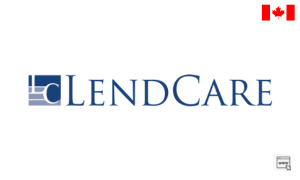How and where to get a personal loan
Whether you’re looking to consolidate debt, make a large purchase, or improve your home, a personal loan can be a great option.
Why Consider a Personal Loan?
When unexpected expenses arise, you typically have three options for funding: payday loans, credit cards, or personal loans. Among these, personal loans stand out as the most cost-effective solution. Let’s break down why.
- Payday Loans: Often predatory, these loans can have interest rates exceeding 400% and are due back within one to two weeks. Avoid them if possible.
- Credit Cards: The average interest rate is around 16%, which can quickly add up.
- Personal Loans: With an average interest rate of just over 9% for a two-year term, personal loans are cheaper and a more manageable option.
Step 1: Run the Numbers
Before diving into applications, it’s essential to determine how much money you need to borrow. Consider any origination fees—these are often deducted from your loan amount. It’s also wise to estimate your monthly payments using a loan calculator. You can find personalized calculators on Bankrate’s dashboard.
Step 2: Check Your Credit Score
Your credit score plays a significant role in your loan approval and interest rates. Most lenders require at least a fair credit score (580 or higher). If your score is lower than expected, consider pulling a report from AnnualCreditReport.com to dispute any inaccuracies. If your score is still low afterward, it may be wise to improve your credit before applying.
Step 3: Consider Your Options
Depending on your credit situation, you may need a cosigner. If that’s not an option, you can look into secured loans, which require collateral like your home or car. Remember, failing to repay these loans could result in losing those assets. Also, think about where you want to borrow from—traditional banks, credit unions, or online lenders.
Step 4: Choose Your Loan Type
Some lenders may ask why you need the loan. Be transparent about your intentions. Common reasons for personal loans include:
- Debt Consolidation: Combine multiple debts into a single loan with a lower interest rate.
- Home Improvements: Fund projects like renovations or repairs.
- Medical Expenses: Cover unexpected health costs without the stress.
- Weddings: Finance your dream ceremony while managing repayment later.
Step 5: Shop for Lenders
Don’t settle for the first offer you receive. Compare rates and terms from various lenders. Start with institutions where you have an existing relationship, as they may offer better terms. Online lenders often provide soft credit checks, allowing you to gauge options without impacting your score.
Step 6: Apply for the Loan
Once you’ve selected a lender, gather necessary information such as your name, address, desired loan amount, and purpose for borrowing. Be ready to provide income and employment details as well.
Step 7: Provide Documentation
After submitting your application, you may need to provide additional documentation, such as pay stubs or proof of address. The quicker you can provide this information, the faster you’ll receive a decision.
Step 8: Approval and Acceptance
Once approved, you’ll need to accept the loan terms. Familiarize yourself with the repayment schedule and ensure you understand when payments are due. Many lenders offer a quicker disbursement, especially online, where you might receive funds in as little as one to two business days.



